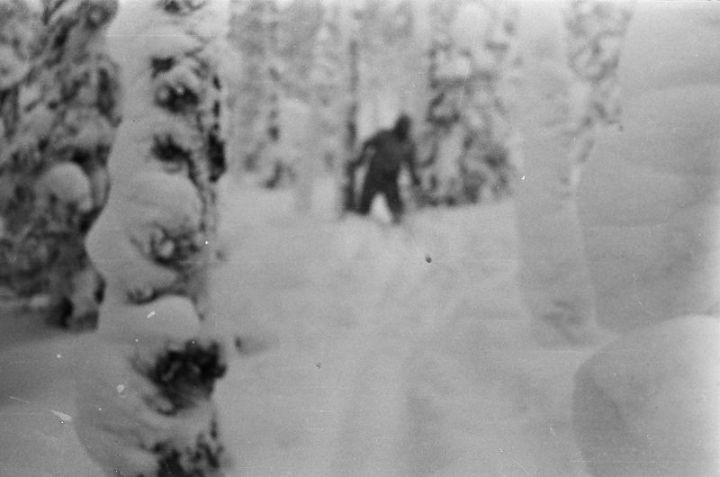
June 2, 2014
by Daniel Loxton, originally published on Skepticblog.
Tonight sees the premiere of a two-hour Discovery Channel Monster Week “documentary,” Russian Yeti: The Killer Lives. With its horror movie trappings, it makes a sensationalist hash out of a genuine historical mystery—the tragic deaths of nine hikers in the Ural mountains in February of 1959. Known as the “Dyatlov Pass incident,” this unsolved cold case has unusual aspects that give it something of an air of the inexplicable, leading to the rise of conspiracy theories and paranormal speculations. Notably, though the bodies of the hikers were eventually recovered by a search party, they were found scattered over a large area in states of partial undress, as though they had fled their tents in the night in a panic. Perhaps, some speculate, they were running from someone—or something? Cue X-Files theme.
I shouldn’t snark. It’s ghoulish to make hay from the untimely deaths of other people—in this case, people who have surviving loved ones today. But mystery-mongering television programs have rarely found a tragedy they weren’t willing to exploit—and distort.
Russian Yeti: The Killer Lives caps a marathon of Discovery monster hoaxes (both of their infamous and profitable mermaids hoaxes and last year’s Megalodon hoax are playing again earlier today). In this program, hosts Mike Libecki and Maria Klenokova set out to solve the Dyatlov Pass incident—or rather, to pretend on air that it had something to do with the Yeti…
You know what is good TV? Monsters. Huge, terrifying, tongue-eating monsters. (Much is made of the assertion that one hiker was missing part or all of her tongue—plausibly bitten during a fall, skeptics suggest, though her body was also found with other presumably post-mortem soft-tissue damage—almost inevitable after weeks of exposure in the forest.) Never mind that we have no particular reason to suppose that the Dyatlov Pass case involves Yetis in any respect (nor, for that matter, aliens, vampires, or griffins). Never mind that Yetis are probably best thought of as a modern myth, as Don Prothero and I discuss in our book Abominable Science! When it comes to the paranormal, media producers are delighted to untether themselves from all responsibility. For all the investigative posturing of programs like Russian Yeti: The Killer Lives, the producers will sacrifice anything—facts, plausibility, dignity, a respected television brand—in the pursuit of a ratings monster.

The central showpiece of the program is a black and white still photograph showing a dark, unidentified figure standing in the trees. It is introduced with stark onscreen text: “The following image is one of the last photos taken by the hikers. It is being shown on television for the first time.” This picture is presented as evidence that a Yeti was stalking the doomed party through the woods—their inhuman killer caught on film. What are we to make of this “extraordinary photographic evidence”?
To begin with, it doesn’t look much like a Yeti. With its short, rather thin arms, it looks a lot like a person in a coat. Its very lameness as Yeti evidence may be the best sign of its authenticity—authenticity as photograph taken during the expedition, that is. (Probably a photograph of a member of the party.)
Read the rest of the review here.
About Craig Woolheater
Co-founder of Cryptomundo in 2005.
I have appeared in or contributed to the following TV programs, documentaries and films:
OLN's Mysterious Encounters: "Caddo Critter", Southern Fried Bigfoot, Travel Channel's Weird Travels: "Bigfoot", History Channel's MonsterQuest: "Swamp Stalker", The Wild Man of the Navidad, Destination America's Monsters and Mysteries in America: Texas Terror - Lake Worth Monster, Animal Planet's Finding Bigfoot: Return to Boggy Creek and Beast of the Bayou.
Filed under Abominable Snowman, Bigfoot Report, Cryptozoology, Photos, Pop Culture, Reviews, Television, Videos, Yeti